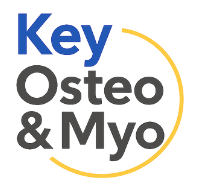What Happens to a Baby’s Body After a Tongue-Tie Procedure
Why Post-Release Care Is Just as Important as the Procedure
How the Tongue, Jaw, and Neck Work Together After Release
What Parents Commonly Notice in Feeding and Comfort Changes
The Connection Between the Tongue, Jaw, and Whole Body
How Tongue Function Influences Breathing and Swallowing
Dispelling these myths helps patients understand why their TMJ pain keeps returning. At Key Osteopaths, we emphasise clear education so patients know what really triggers flare-ups and how to stop them from dominating daily life.Anna, Principal Osteopath at Key Osteopaths

The Cranial-Sacral Link: Why Tension Patterns Matter
The Role of Osteopathy in Balancing These Systems
Anna is absolutely incredible and I cannot recommend her high enough! I have been seeing Anna for 2 years and she has changed my life. I had spent… read more the previous 5 years to this with serious back pain due to disc degeneration. During this time I had been given both steroid injections and a nerve denervation to ease the pain (along with many painkillers). Since seeing Anna I have not needed anything. She works her magic and then gives you simple exercises until your next appointment. She has also advised on my posture, driving and sleep position and everything she has advised has worked. I don’t need to see her so regularly anymore, but she is now helping my daughter who suffers ankle problems. A very talented lady, who is also excellent with children. Go see her !
Anna came highly recommended to me by a friend so I decided to go and see her about a muscle issue in my left arm. Anna was fantastic, she asked… read more all the right questions and gave all the right advice, after treatment I had the best arm workout I’d had in over 5 months with no pain in the morning that I usually would have suffered from. I should have gone to see her sooner ! I’m so happy and grateful for the treatment I have received. A big thank you from me and my left arm ! thanks Anna !!
Having suffered a neck injury during my rugby career I did the rounds with various recommended osteopaths with limited success. Then by chance I visited Anna in West Byfleet and… read more the problem was sorted in 2 sessions . Now as soon as the symptoms appear they are deal will professionally and quickly – highly recommended.
Why Some Babies Still Struggle After a Tongue-Tie Release

Residual Muscular Tension and Compensatory Patterns
Difficulty Adjusting to New Oral Movements
The Role of Osteopathic Treatment in Releasing Stored Strain
What Osteopathic Treatment Involves After Tongue-Tie Release

Gentle, Targeted Techniques to Support Recovery
What a Typical Post-Release Session Looks Like
A post-release osteopathic session begins with a detailed discussion about the baby’s feeding behaviour, comfort, and sleep since the procedure. The osteopath observes how the baby moves, feeds, and responds to touch, looking for subtle signs of tension or imbalance around the tongue, jaw, and neck. Each session is calm and unhurried, allowing the baby to relax and adapt naturally.
Treatment involves soft, rhythmic techniques that help release residual tightness, restore balanced motion through the cranial and cervical regions, and improve tongue coordination. Babies often remain calm or even fall asleep during treatment, as the techniques are soothing and supportive. Parents are guided through what to expect during the session, and gentle home advice is provided to help continue the progress between visits.
How Many Appointments Are Usually Needed
The number of sessions required varies depending on how long the restriction was present and how the baby has adapted following the release. Some babies respond quickly, showing improvements in feeding, breathing, and comfort after just one or two treatments. Others benefit from a short series of sessions to gradually release residual strain and integrate new movement patterns more completely.
Ongoing assessment ensures that treatment remains appropriate to the baby’s progress. The goal is always to support natural recovery, reduce strain, and encourage efficient, comfortable feeding. Parents are kept fully informed at each stage, with clear guidance on what changes to expect as their baby adapts.
If your baby continues to struggle with feeding, restlessness, or tightness following a tongue-tie release, our osteopaths at Key Osteopaths can help. Families travel from all over Surrey for this level of specialist post-release care. Book online or contact our team today to arrange a gentle, evidence-based appointment that supports your baby’s recovery, comfort, and long-term development.

MEET THE
team
I had a fantastic treatment from Anna. She really got to the root of problem and gave me great advice to improve my form and help me to prevent further… read more injury.
I found the experience reassuring .Ana was very supportive and professional.I feel the care received was excellent
I have been seeing Francesca for a few years now, initially for severe back pain which she was able to identify the source of and alleviate really quickly. Now… read more I see her on a fairly regular basis (my choice), so that she can make sure problems aren’t reoccurring and also deal with any new aches and pains I inevitably pick up along the way. I feel she has an intuitive instinct backed by her advanced qualifications and regularly recommend her to others.
The Benefits of Combining Osteopathy with Frenulotomy Care

Enhancing Tongue Mobility and Feeding Function
Supporting Latch, Breathing, and Cranial Symmetry
How Osteopathy Complements Lactation Support and Paediatric Advice
I have been seeing Anna for a few years now after struggling with migraines. She has not only helped me immensely but was the first person I’d seen to get… read more to the root of the problem. Along with being a brilliant therapist, her advice and aftercare is invaluable. I can’t recommend the clinic highly enough
When to Seek Osteopathic Support After a Release

Signs of Tightness, Fussiness, or Feeding Fatigue
After a tongue-tie release, most babies begin to adapt naturally, but some continue to show signs of tension or fatigue that suggest additional support may be needed. These signs can appear in several ways, often during feeding or rest. A baby who tenses the shoulders, arches the back, or struggles to keep a latch for long periods may still be compensating for residual tightness in the jaw, neck, or cranial base.
Fussiness or irritability during or after feeding can also be an indicator. Babies may take shorter feeds, pull away suddenly, or become distressed when positioned a certain way. Other subtle signs include clicking, dribbling, and swallowing excess air, which can lead to trapped wind, reflux, or disrupted sleep. In some cases, parents notice their baby prefers turning the head to one side or finds it difficult to stay comfortable lying flat.
These behaviours do not always mean that the tongue-tie release was incomplete; rather, they often indicate that tension patterns remain elsewhere in the body. Osteopathic assessment can help identify where these restrictions are located and whether they are influencing the baby’s feeding rhythm or comfort. By gently easing tightness in the cranial, jaw, and neck structures, treatment helps the baby find balance, allowing smoother feeding, calmer digestion, and improved relaxation overall.
When Early Follow-Up Makes a Difference
What Results to Expect Within the First Few Weeks
Book a Post-Release Appointment at Key Osteopaths

Specialist Osteopathic Care for Babies in Surrey
Key Osteopaths provides dedicated post-release osteopathic care for babies who have undergone a tongue-tie procedure. Our approach focuses on restoring balance, comfort, and coordination across the tongue, jaw, neck, and cranial structures. Each appointment is gentle, calm, and fully tailored to your baby’s needs, supporting the body’s natural ability to adapt and function freely after the restriction has been released.
Our osteopaths combine clinical understanding with extensive experience in paediatric care to deliver treatment that supports healthy feeding and calm development. Every session is guided by your baby’s comfort and response, ensuring that progress occurs naturally and safely.
Supportive aftercare for families in Woking, Guildford, Cobham, Dorking and beyond
Book online to help your baby feed and grow with greater ease and comfort
Friendly and professional and most of all…effective! I had a really comprehensive assessment with Francesca who helped with a range of postpartum pelvis and back issues. I was given a… read more variety of different exercises to do at home and after just a couple of weeks I’ve noticed a huge improvement. Thanks Francesca and Anna.
Despite a busy practice, Anna rescued me when I was in agony and unable to move, let alone get out of bed. She quickly got me up on my feet… read more and gave me exercises to keep me mobile until the next visit. I cannot fault her. She’s not just a fantastic practitioner but a lovely person as well. She always puts others before herself. In fact she’s so highly respected that she doesn’t need to scrape around for work and genuinely only treats you when you need it. She is a most professional person and comes very highly recommend from me.
I specifically booked in with Anna as she came highly recommended by a friend. I have been visiting physios, chiropractors and osteopaths for years with no real success. The problem… read more I had wasn’t complex, but I also suffer with a rare syndrome which means fixing that simple problem made it slightly complex!! I was pleasantly surprised when Anna was aware of my syndrome and knew all about it! No one else I had been to knew anything about it! The treatment she gave me was so relevant and was in line with my syndrome, which meant I saw immediate results when I stuck to the exercises. I genuinely feel like Anna really listened to what I had to say when so many others hadn’t. She is so knowledgeable, approachable, helpful and thoughtful I wouldn’t go anywhere else and would 100% recommend visiting. On a side note, her studio is so spacious and clean, it always is a pleasure to attend.
FAQ — Tongue-Tie Release and Osteopathy
How soon after a tongue-tie release should my baby see an osteopath?
Most babies benefit from seeing an osteopath within the first few days after their tongue-tie release. Early assessment allows any residual tension in the tongue, jaw, or neck to be addressed before it becomes a recurring pattern. In some cases, the first session may take place a little later if the area under the tongue needs a short period to heal. The ideal timing is when your baby can feed comfortably but still shows signs of tightness, fatigue, or imbalance.
An osteopathic follow-up at this stage supports recovery by improving coordination, easing strain, and helping the tongue adjust to its new freedom of movement. The sooner post-release support is introduced, the smoother and faster the transition tends to be.
Is osteopathy safe for newborns and infants?
Yes, osteopathy is safe for newborns and infants when performed by a qualified and experienced practitioner. The techniques used are extremely gentle, often involving no more than the light pressure you might use to test the ripeness of a tomato. These soft movements help release tension without causing discomfort, allowing the baby to relax throughout treatment.
Osteopaths trained in paediatric care understand the delicate anatomy of babies and adapt every technique to suit the individual. Treatment is always baby-led, ensuring that your child remains calm, comfortable, and secure at all times.
Can osteopathy help with colic, wind, or reflux after tongue-tie release?
Yes. Colic, trapped wind, and reflux-like symptoms are common after a tongue-tie release because the baby’s feeding mechanics are changing. As the tongue learns to move more freely, air can be swallowed during the adjustment phase. Gentle osteopathic treatment helps release tightness through the diaphragm, neck, and cranial base, improving how the body coordinates swallowing, breathing, and digestion.
By easing tension and improving postural balance, osteopathy can help reduce wind, reflux, and unsettled behaviour, allowing the baby to feed and rest more comfortably. Many parents notice calmer feeding sessions and better sleep within a few visits.
How many osteopathic sessions does a baby usually need?
The number of sessions depends on how long the restriction was present, how well the baby has adapted after the release, and the level of residual strain in the body. Some babies improve noticeably after one or two treatments, while others benefit from a short course to fully restore balance and coordination.
Your osteopath will assess your baby’s progress during each session and recommend the most appropriate plan based on their individual needs. The aim is always to support natural healing and minimise the number of sessions required while ensuring the results are lasting and effective.
Will treatment affect breastfeeding or bottle-feeding?
Yes, but in a positive way. Osteopathic treatment helps improve how the tongue, jaw, and neck work together during feeding, which can enhance both breastfeeding and bottle-feeding efficiency. By releasing residual tension, the baby is able to maintain a deeper latch, swallow more effectively, and feed with less effort.
Parents often report reduced clicking, less dribbling, improved digestion, and more settled behaviour during and after feeds. Osteopathic support works in harmony with lactation advice and paediatric guidance to give your baby the best possible chance of feeding successfully and growing comfortably.

